During our recent trip to Wayanad, Kerala, we were focusing on wildlife. Given that Wayanad is one of the most naturally endowed part of the world, it had a lot of offer in terms of flora and fauna. An extension of that is perhaps its museums covering natural elements such as tea and honey.
We had the delightful opportunity of visiting the BeeCraft Honey Museum in Vythiri, Kerala. Amid the lush greenery of Vythiri, the Honey Museum offers an immersive experience into the fascinating world of honeybees and honey production. As India’s first honey museum and the world’s second, it builds on the legacy of the region’s rich beekeeping heritage. As we later realised, we had landed at the best honey museum in India.
Contents
Brief History of Honey Museum, Wayanad
The BeeCraft Honey Museum was started by entrepreneur Usman Madari with help from the Kerala government. All of us would have consumed honey either regularly or occasionally. Few of us would have realised how the honey is produced and bottled that it reached our tables.
The idea behind the BeeCraft museum is to teach people about honeybees, how beekeeping works, and how honey is made. Supported by the Khadi Board and government programs, the museum highlights why bees are so important for nature and why we need to protect them. Since it opened in January 2021, it is still almost a new kid on the block. But its simple and engaging way of sharing information has already created the proverbial buzz and makes it a museum enjoyable for both kids and adults.
What to See at Honey Museu,m Wayanad
“Madhu Vātā Rtāyate…” – This hymn from Rigveda compares the pleasant breeze with the sweetness of honey. Our visit to the BeeCraft Honey Museum epitomised the spirit of this shlok. We had not checked the honey museum, Wayanad reviews, and came here on a limb. Yet the experience was both enlightening and engaging. Here’s a glimpse of what you can expect:
Guided Tour
Upon arrival, we were greeted by trained guides who led us through various sections of the museum. They speak in different languages, but our tour was in English. Our guide, Favas provided insights into how honeybees transform flower nectar into honey, the methods employed to remove impurities and moisture, and the nuances of beekeeping and honey production.
Favas’s narration was not pedantic but crisp and interesting. Learning about the different species of bees and their unique roles within the hive was particularly fascinating. The structured lives the bees led was an inspiration. It was, as they say, a whole new world!
Honey Processing Unit
The museum houses a state-of-the-art honey processing plant. Here we saw the meticulous steps involved in extracting and refining honey, ensuring its purity and quality. Witnessing the journey from hive to bottle deepened our appreciation for this sweetness that we were exposed since decades back as children.
Interactive Exhibits
The museum has many interactive displays that delves into the science of pollination, the lifecycle of bees, and the environmental importance of these industrious insects. The exhibits cater to both adults and children, making complex concepts accessible and engaging for all ages. The muted lighting inside the galleries also creates the perfect ambience of visualising the apiary process.
Honey Tasting Session
The museum saves the best for last. The highlight of our visit was the honey tasting session. We sampled an array of surprising honey varieties, including garlic, ajwain, litchi, and mustard honey. Each type offered distinct flavours and health benefits, some of which were entirely new to us.
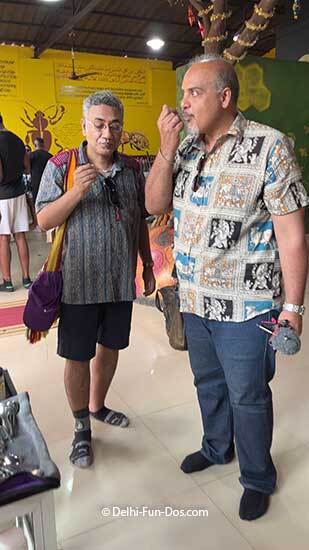
All the visitors had their personal favorites. We expected the garlic honey to be unsavoury. Yet the mild, pungent flavour in this honey was a magical contrast with the sweetness. The mustard honey was also something completely new to us. This sensory experience was both pleasant and instructive.
Retail Section
Before concluding our tour, we explored the museum’s retail section. Here, a diverse range of honey products is available for purchase, allowing visitors to take home their favorite varieties. In addition to honey, the shop offers other Kerala specialties, providing an opportunity to pick up authentic local items.
We picked up Kerala’s world famous spices – mace, pepper, and clove. And yes, we also bought some garlic honey. We were tempted to pick up some more honey, but our flight luggage weight limitation stopped us.
Children’s Play Area
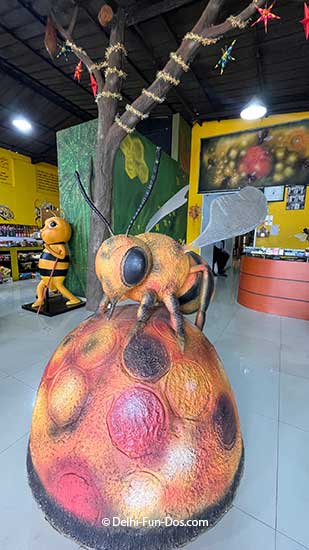
For families traveling with kids, the museum features a designated play area. There were fun structures of oversized bees that would easily catch the attention of the youngest visitors. We saw some children entertaining themselves here, making the visit enjoyable for the entire family. These honeybee installations double up as selfie stations as well.
Honey Museum Wayanad Timings
The BeeCraft Honey Museum is open daily from 9:30 AM to 8:30 PM. We understand they do not have a weekly closure. Whether you’re an early bird or prefer evening explorations, the museum’s extensive operating hours cater to all schedules.
Honey Museum Wayanad Ticket Price
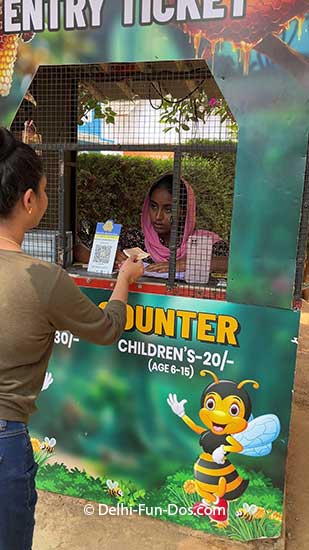
The Honey Museum Wayanad entry fee break-up is as follows:
- Children below 5 years: Free
- Children above 5 years: ₹20
- Adults: ₹30
This nominal pricing ensures that families can enjoy an educational outing without pinching their budgets.
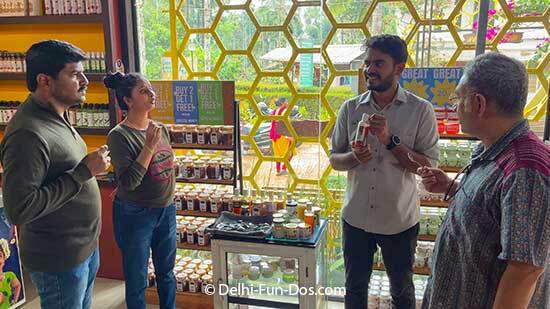
How to Reach Honey Museum, Wayanad
Located in Old Vythiri, the museum is easily accessible by road. If you’re driving from Mettupalayam, the journey takes approximately 1 to 2 hours. From the main road in Vythiri, a narrow path about 800 meters long leads directly to the museum entrance. For those relying on public transportation, local buses and taxis are readily available to ferry you here.
Where to stay near the Honey Museum, Wayanad
Given that Wayanad is always in high demand for its ethereal natural beauty, it is extremely popular among travellers from India and abroad. There are a host of accommodation options in Wayanad that include hotels, resorts, and homestays.
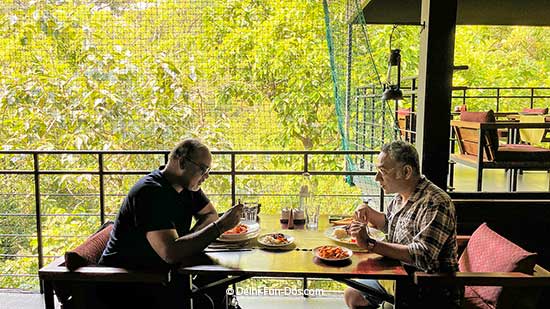
We stayed at CGH Wayanad Wild, an enchanting nature resort inside the forests of Wayanad. We would remember our stay not only for the understated luxury of the resort but also the rare opportunity of observing the flora and fauna of Wayanad up and close here.
Things to do near Honey Museum, Wayanad
We leisurely covered the BeeCraft Honey Museum and still had some time on hand. Hence, we visited the following places that were within 5 to 15 minutes’ drive from here.
Vythiri Market
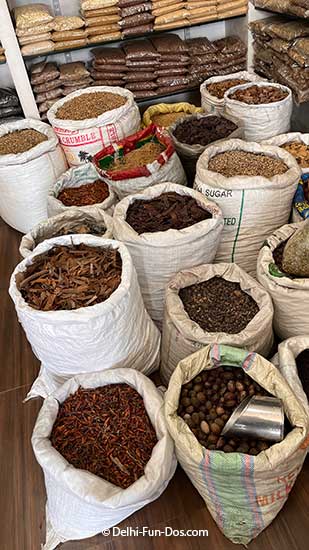
A barely 5-minute drive from the Honey Museum, this market gave us an insight into the lives of the locals here. We also thoroughly enjoyed some banana chips and cookies at ‘Famous Bakery’ in Vythiri Market. We bought some more spices like bay leaf and cardamom from this market.
Tea Museum
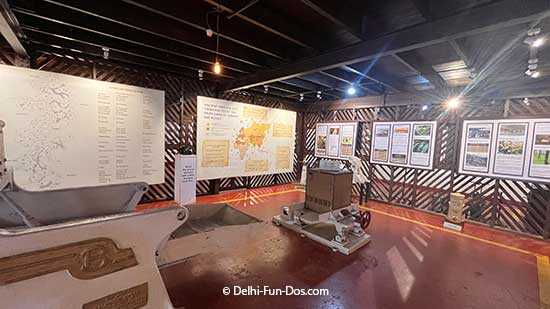
We visited the Tea Museum, about 15 minutes distance from here. It was located in a tea garden and had displays about the history of tea plantations in British times, and so on. The Tea Museum also offered some adventure sports on the side.
En-Ooru
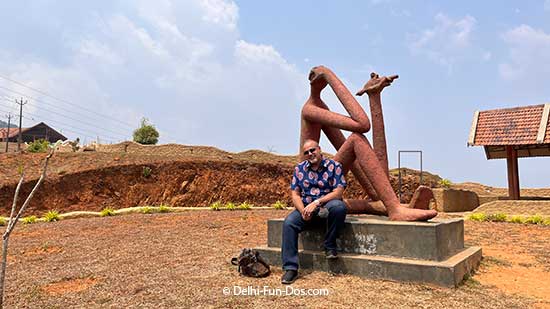
It is a curated tribal village experience perched atop a hill that offers an excellent view of the surroundings. The huts in En-Ooru have the most artistic, almost dreamy structures, and En-Ooru offers a variety of photo-ops. This space is within 10 minutes’ drive time from the Honey Museum.
The BeeCraft Honey Museum in Wayanad offers a unique and enriching experience that seamlessly blends education with leisure. Whether you’re a nature enthusiast, a first-time traveller, or a family seeking an informative outing, this museum is a must-visit destination. There is not a dull moment in this museum. Honey Museum Wayanad’s commitment to showcasing the wonders of honeybees and the art of honey production left us with a deeper appreciation for these tiny yet mighty creatures and the sweet treasures they create.

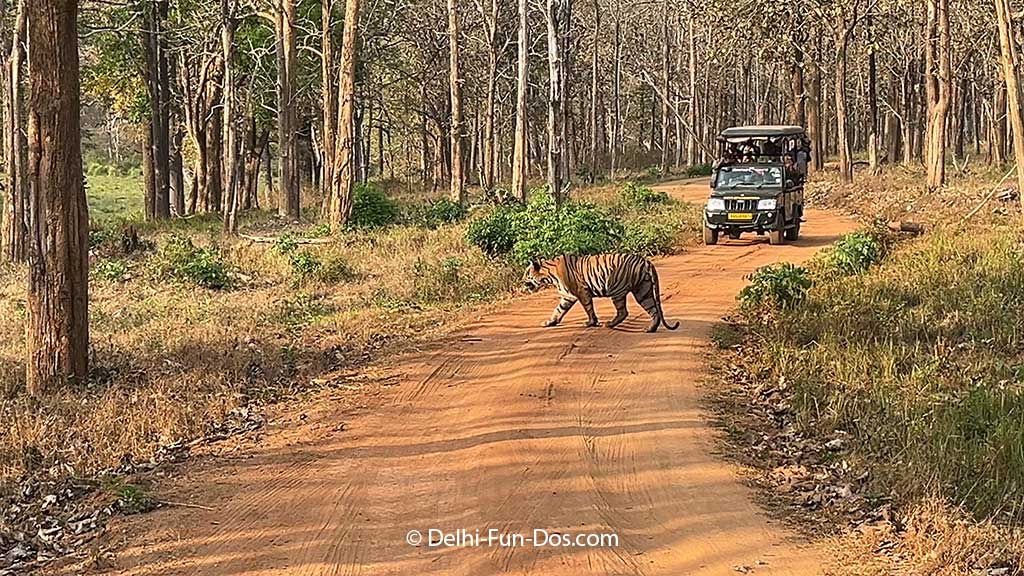
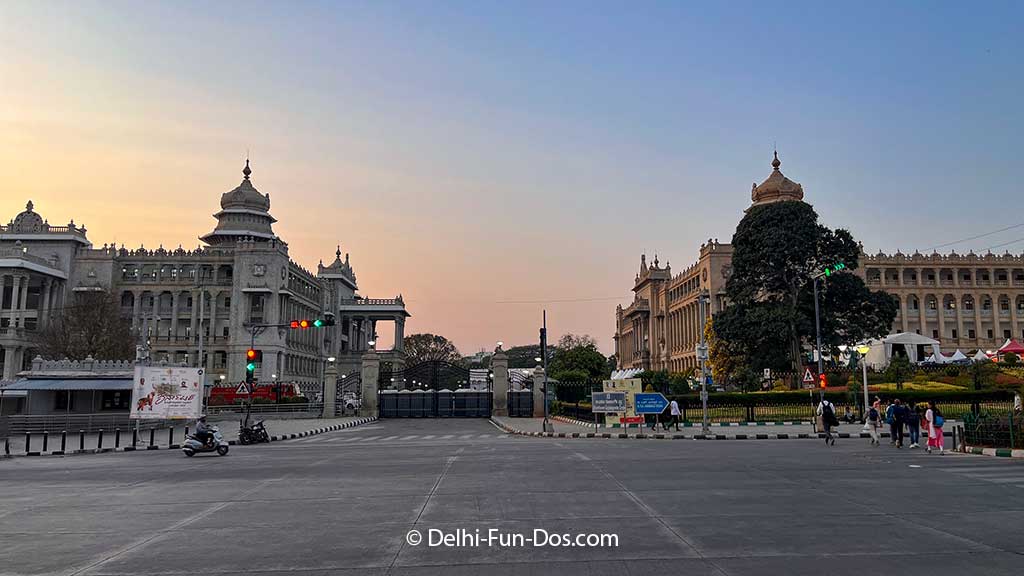
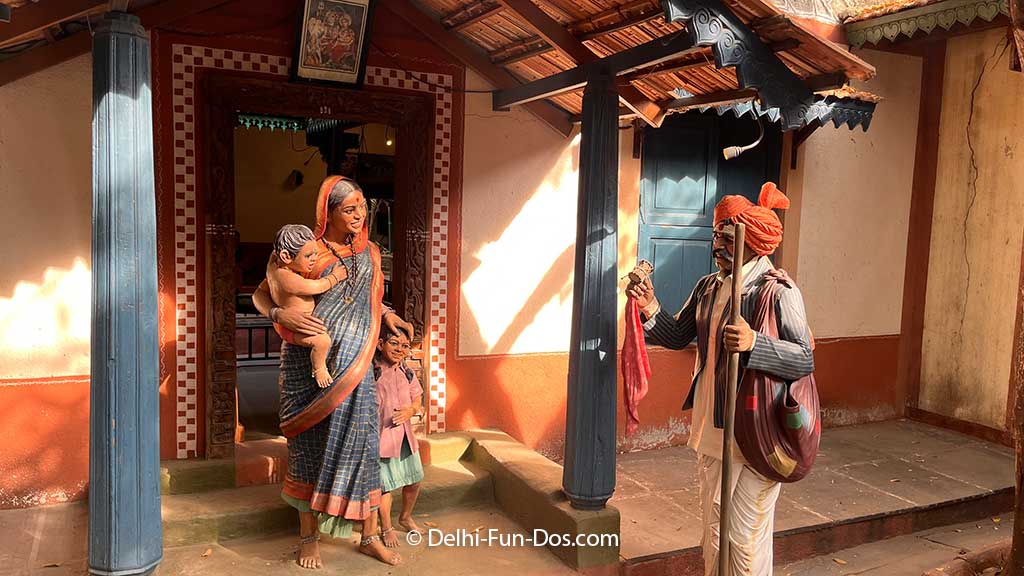
Your writing is like a breath of fresh air in the often stale world of online content. Your unique perspective and engaging style set you apart from the crowd. Thank you for sharing your talents with us.